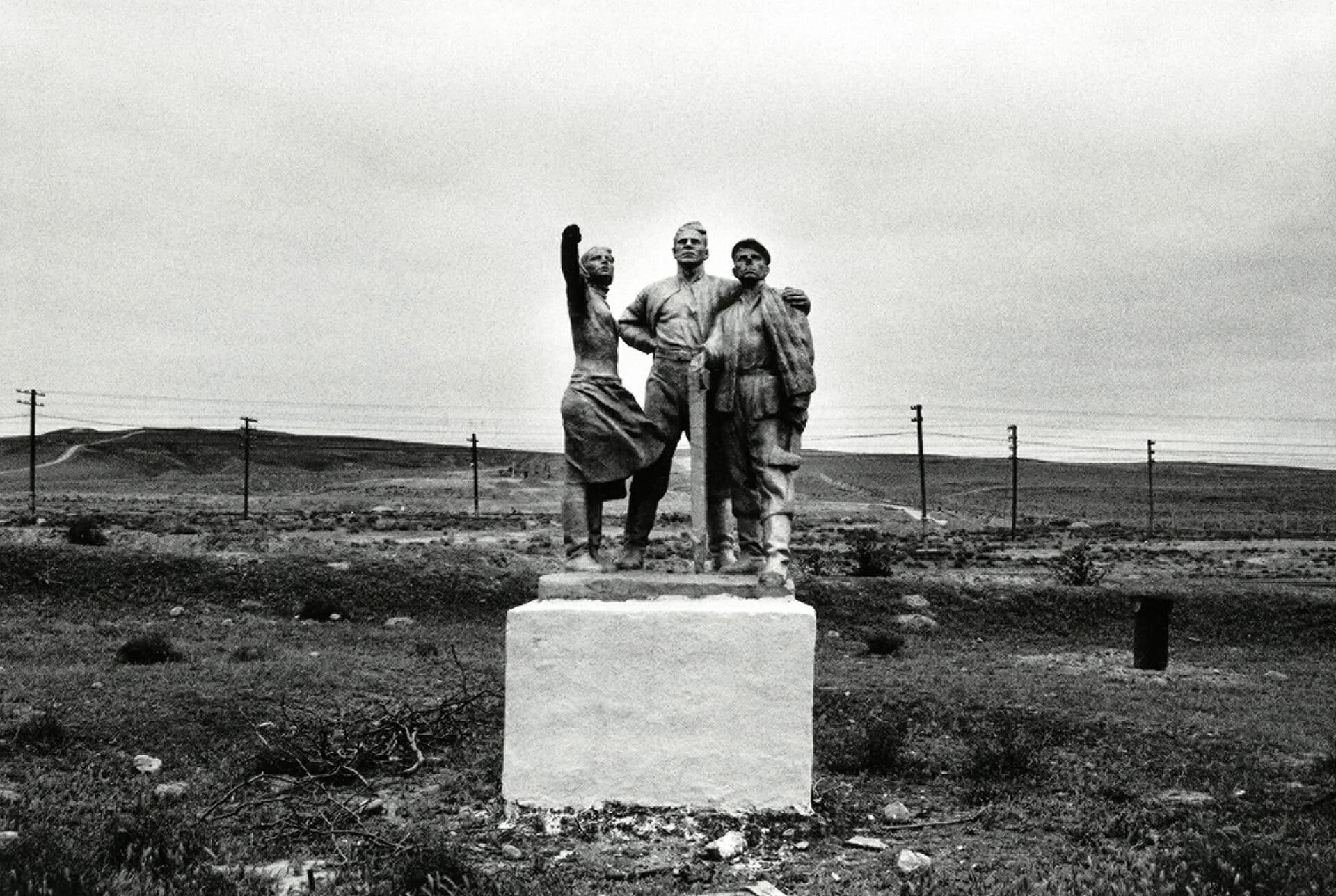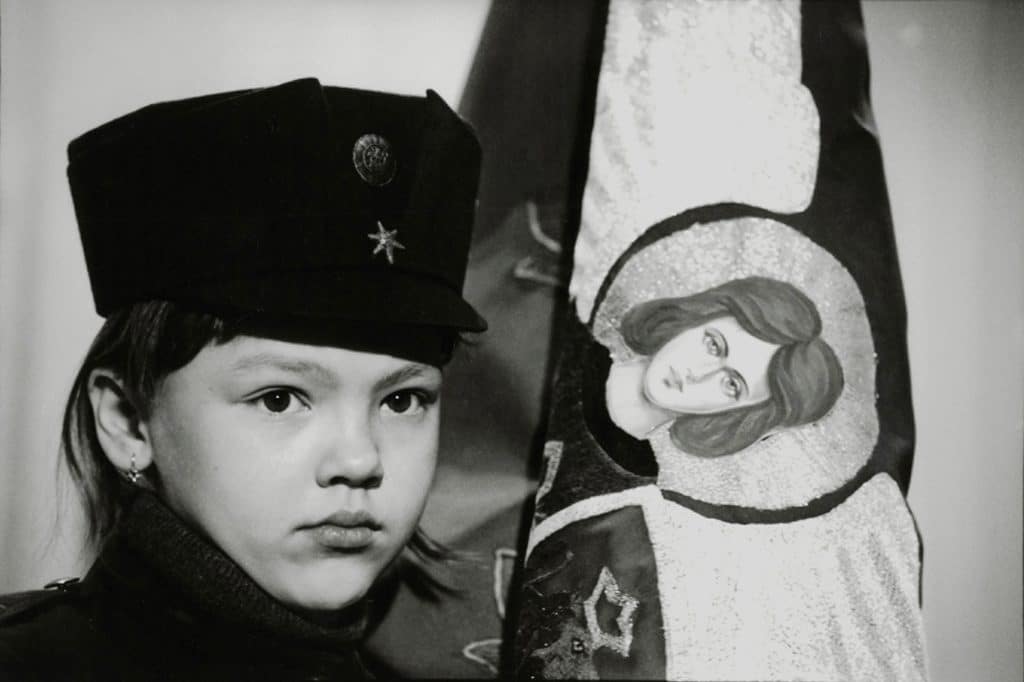In the early 1990’s, Shepard Sherbell got an assignment from the German weekly Der Spiegel to go to the USSR and photograph its demise. As a photojournalist, he had documented multiple American presidencies, as well as the US invasion of Grenada, and the Nicaraguan Revolution among countless other historic events: now, he was photographing the dissolution of a superpower, as the USSR crumbled. Years later, these pictures would become an award-winning book titled Soviets: Pictures from the End of the USSR, filled with over 200 black-and-white images documenting the lives of the everyday people Sherbell encountered across fifteen former Soviet republics. In a new online exhibition, Ki Smith Gallery, in partnership with the MUUS Collection, is selling 50 prints from this series, and donating all net proceeds to The Kyiv Independent to support independent reporting and photojournalism throughout the war in Ukraine.
One of the most striking images shows a coal miner smoking, speckled by the white snow falling around him, a stark contrast to the blackened dust that covers his hands and weathered face. Like the miners behind him, he drags on the remnants of a burning cigarette: according to Sherbell, the miners would smoke half of a cigarette in the morning, and save the second half for the end of their grueling shift, a necessary rationing as the workers only made the equivalent of $30 per month.
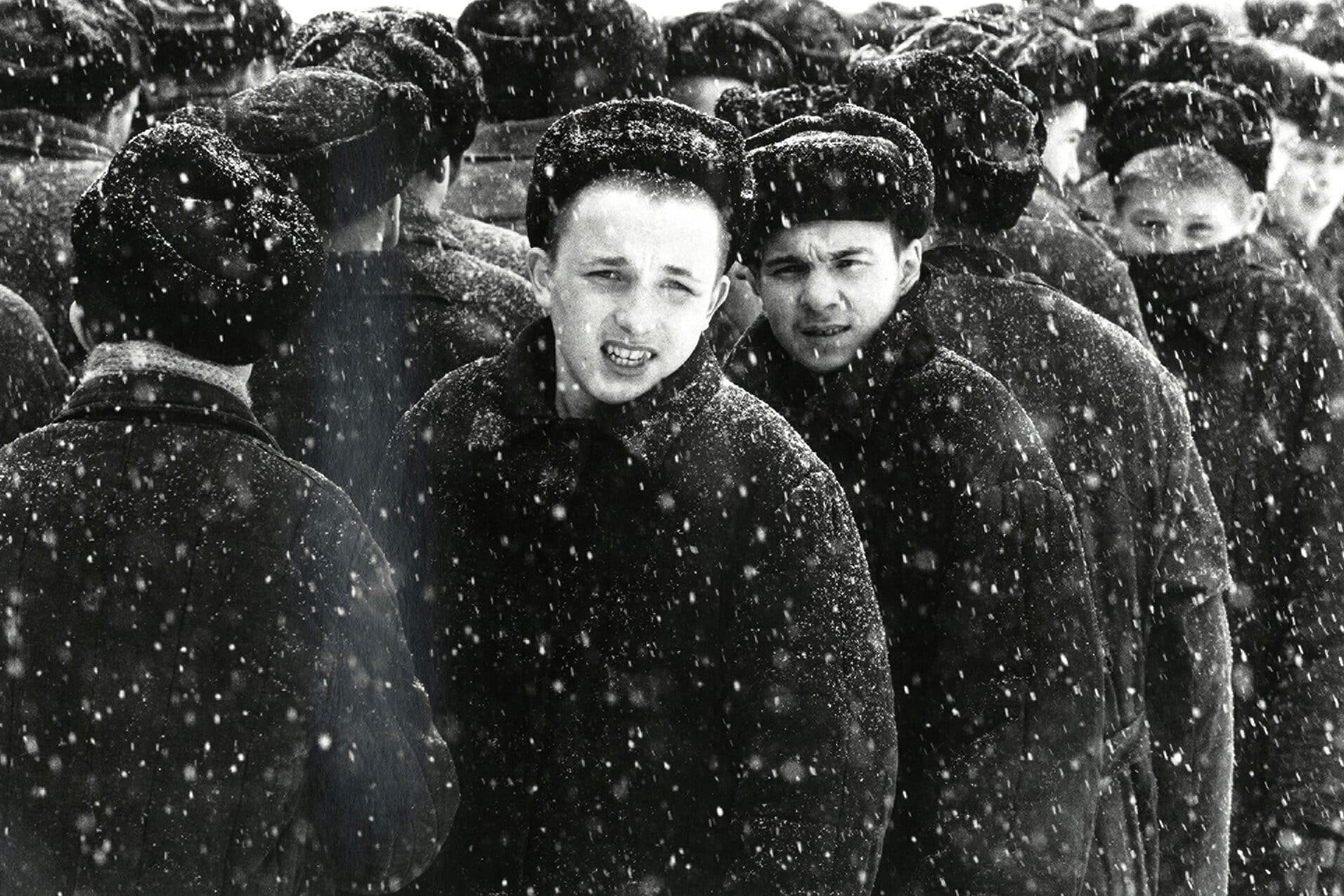
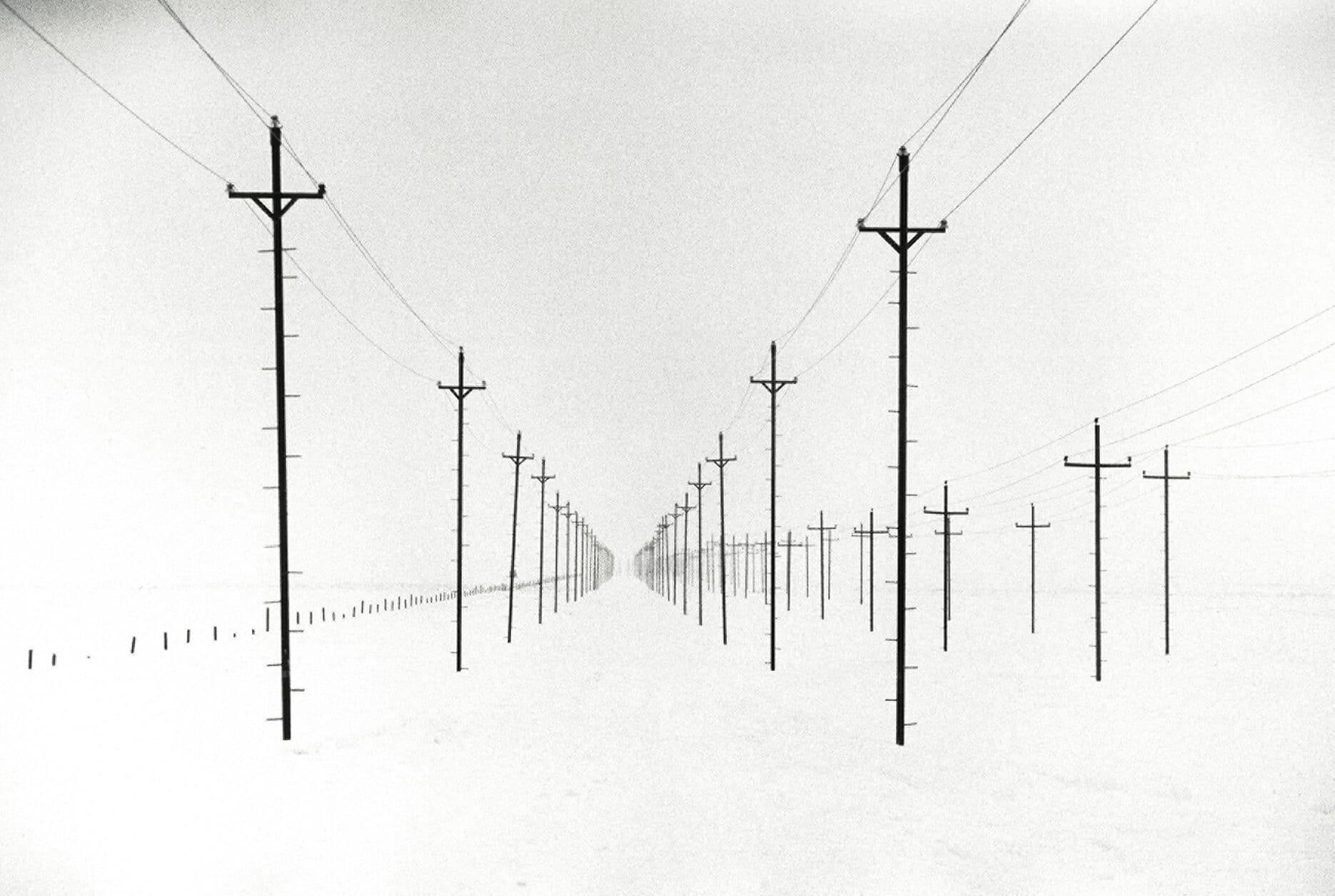
Sherbell’s images show a bleak world blanketed in white; one picture, taken in West Siberia, shows telephone poles in the snow, seemingly stretching into infinity as they grow smaller and smaller down the road. The white of the snow and the white of the sky are virtually indistinguishable. Then there are the relics of the regime: posters of Gorbachev, or a series of statues that stand triumphant in a lonely open field.
In addition to the environments around him, he captured the toll that the collapse took on the everyday populace, too. A particularly heartbreaking image shows an elderly woman with worry across her face on the day that food prices became decontrolled, an action that plunged the already-impoverished into further lack and despair.
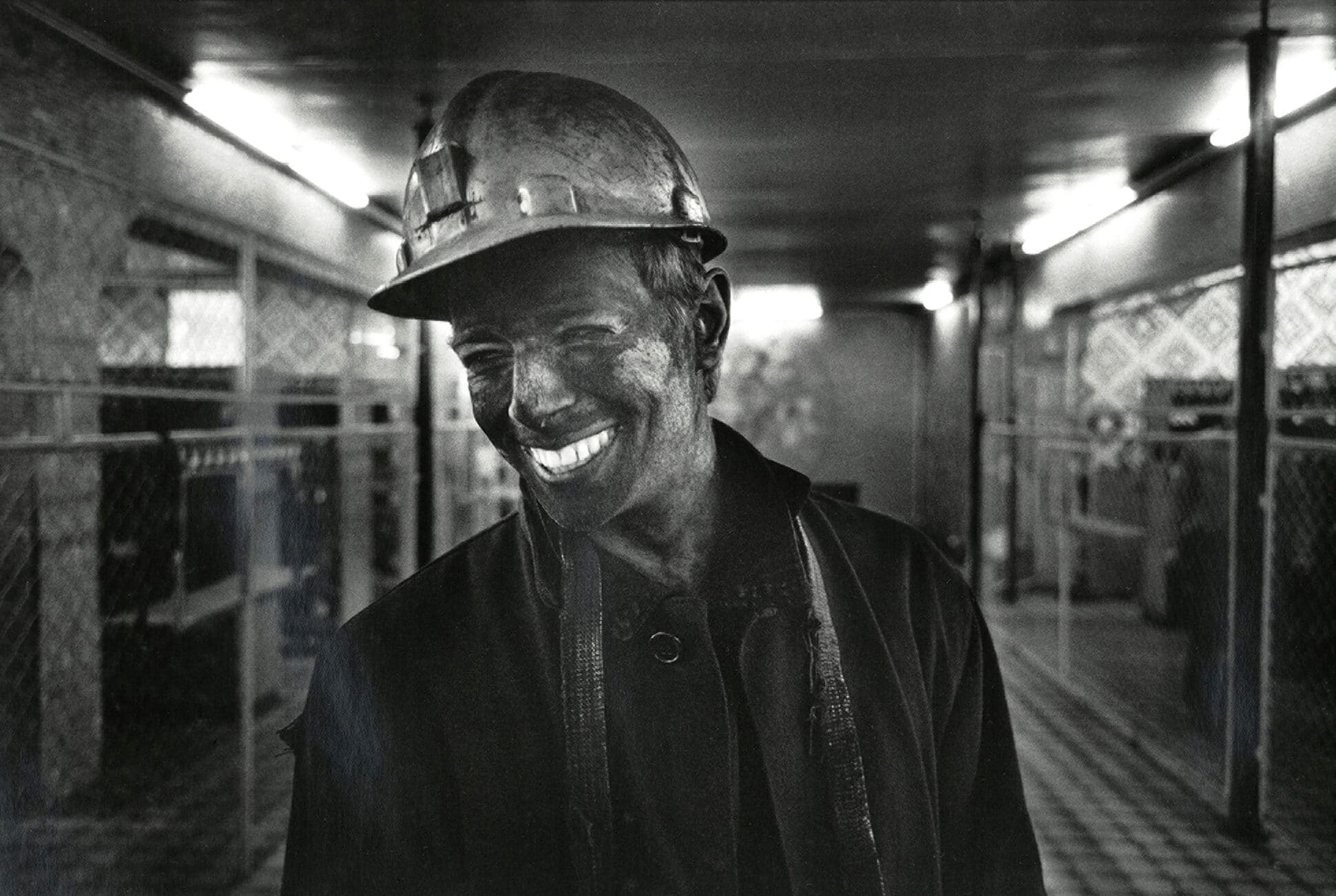
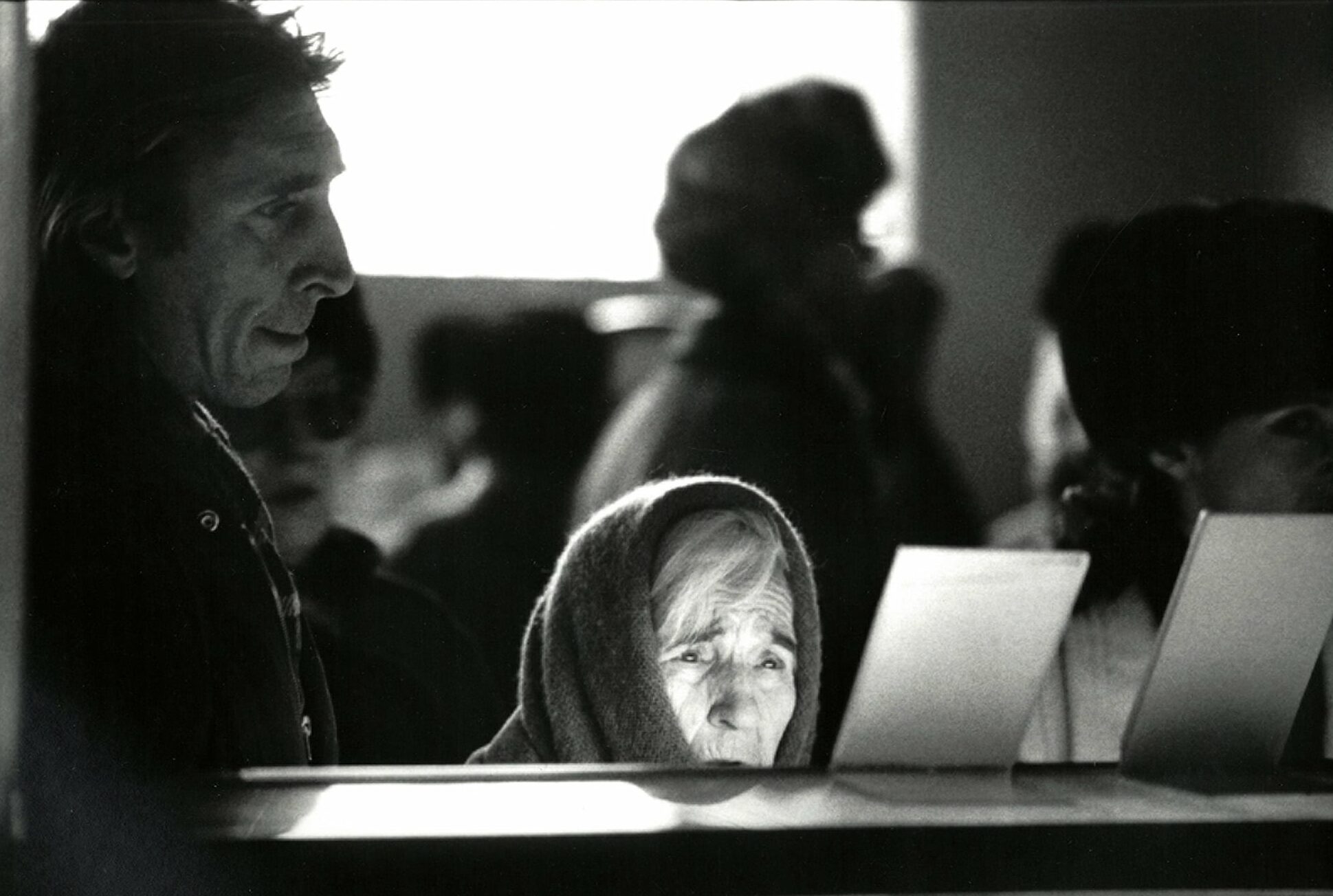
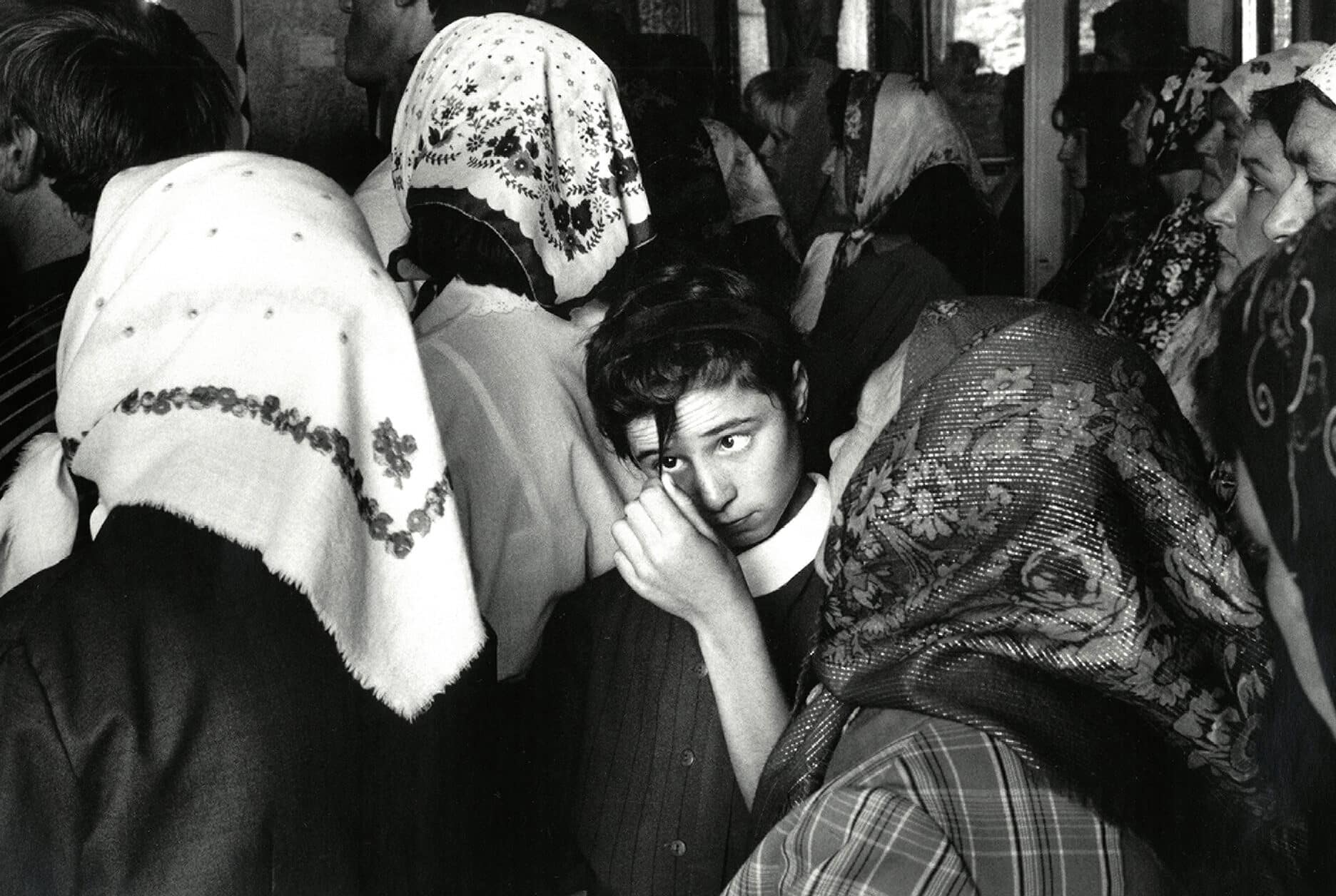
Thirty years later, Soviets is a harrowing reminder of the risks of an unconstrained state power, and the plight of civilians in times of conflict. As Russia continues its invasion of Ukraine, Sherbell’s images are as timely as ever. The resilience that the Ukrainians have been demonstrating in the face of unprecedented war recall what author Serge Schmemman wrote in the introduction to Sherbell’s Soviets: “I know that time spent in… that black-and-white world that Shepard Sherbell has captured will stay with me forever. It is where I learned about the avarice and cruelty of unconstrained state power, and it is where I discovered the enormous capacity of the human spirit to persevere.”
“Shepard Sherbell: Soviets”, online exhibition, Ki Smith Gallery, New York, on view until July 1.

